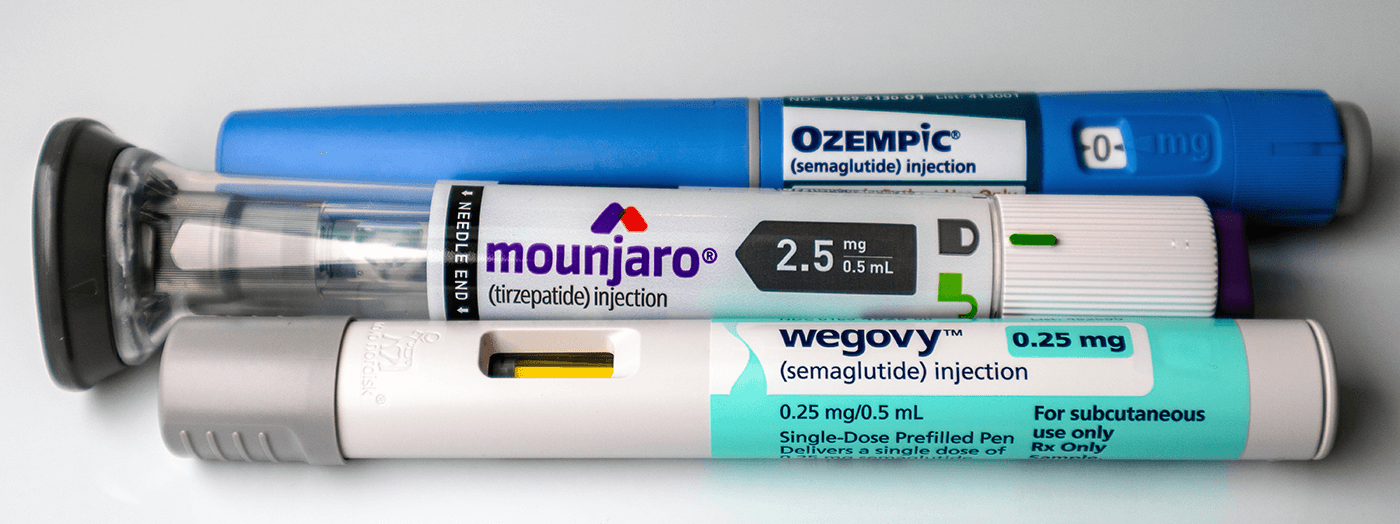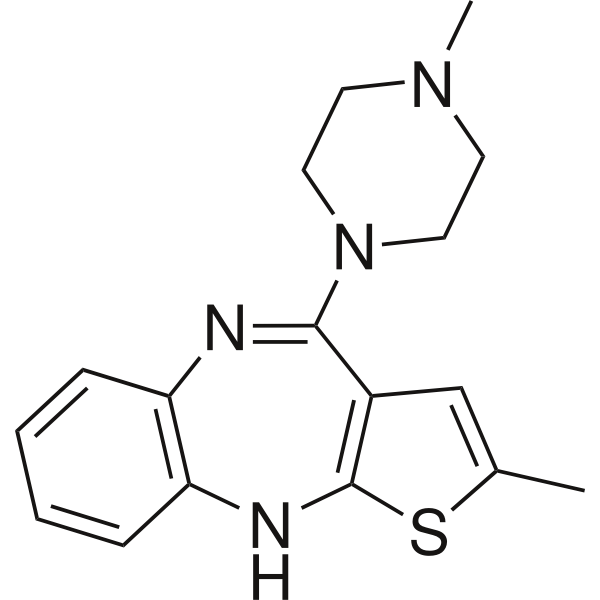Note: This article does not constitute medical advice. Please consult with your doctor before making any decisions regarding your health
Olanzapine, also known as Zyprexa has been around for years. But what exactly does olanzapine do to the brain that makes it so popular with psychiatrists and doctors?
Olanzapine has been in the market since 1996. Since then it is being prescribed as a potential and powerful anti-psychotic medication to patients.
There are many questions that come up when someone first starts taking olanzapine - both from patients and their family members. Most commonly, they want to know how effective this medication can be at treating various conditions like bipolar disorder and schizophrenia.
They're curious as to how quickly results will appear after starting therapy, and whether or not side effects might occur during the process. Weight gain and addiction concerns often surface as well.
Read on to answer all your questions!
The Effects of Olanzapine
One thing that everyone who takes olanzapine wants to know is how fast its effects will kick into gear once injected.
Most people start noticing positive changes within 2-3 weeks of beginning olanzapine. However, those suffering from acute psychosis or severe depression should expect relief sooner than that.
However, if your symptoms worsen over time, you may need to adjust dosage levels accordingly.
Since olanzapine causes drowsiness, dizziness, and dry mouth, patients should take breaks every couple of hours to prevent falling asleep unintentionally. If you notice any strange sensations happening while using this medication, call your doctor immediately.
These include uncontrollable shaking movements, involuntary jerking motions, muscle spasms, numbness, tingling, tremors, nausea, vomiting, diarrhea, constipation, breathing difficulties, heart palpitations, chest pains, flushing, sweating, urinary incontinence, increased thirst, urination, hunger, choking, and drooling.
How Does This Drug Work In The Body?
It's important to understand that olanzapine doesn't "cure" whatever condition you currently suffer from. Instead, it helps control the symptoms associated with certain mental health issues through a variety of means.
Each person responds differently to this drug due to genetic variations and individual differences.
How soon will my symptoms improve?
Like other medications, olanzapine targets specific receptors in the brain called D1 and D2 dopamine receptors. Stimulation of these receptors produces pleasant feelings of euphoria and relaxation, but too much can cause hallucinations and delusions.
When released excessively, neurotransmitters become unbalanced which then affects mood and behavior. Olanzapine acts as an antagonist to these receptors, blocking excess stimulation and helping restore balance again.
In order to effectively treat multiple problems, olanzapine must reach high enough blood concentrations throughout the body in order to work properly. Since the liver metabolizes most drugs relatively quickly, it only takes approximately 3-5 days for this medication to build up in your system.
Once it reaches peak concentration, however, this level stays consistent. So although it won't jump overnight, your overall response to olanzapine will steadily increase each day you take it.
Why Is It So Effective At Treating Mental Disorders Like Schizophrenia And Bipolar Disorder?
People often complain that modern medicine offers little hope in terms of dealing with mental illness, especially schizophrenia, and bipolar disorder. While scientists continue to explore ways to reduce the negative impact of these diseases on individuals' lives, medication remains the best option available.
For starters, olanzapine was approved by the FDA specifically for use against psychotic illnesses. Studies show that this drug dramatically reduces schizophrenic thinking patterns and behaviors. Patients typically report feeling less paranoid, anxious, and hostile towards loved ones.
Other symptoms decrease as well, including suicidal thoughts, agitation, aggression, insomnia, anxiety, irritability, confusion, memory loss, restlessness, and poor impulse control.
Bipolar disorder sufferers respond similarly to olanzapine because it effectively controls mania and hypomania. Mania refers to extreme happiness, energy, and sexual urges, whereas hypomania describes similar highs accompanied by racing speech, risk-taking, and dangerous activities.
Olanzapine allows those affected to lead normal lives again instead of being stuck in manic states where nothing seems worthwhile anymore.
Weight Gain With Olanzapine Treatment
While weight gain isn't necessarily considered a negative side effect, it's something worth noting nonetheless. Some studies indicate that olanzapine actually increases fat stores in the body, leading to obesity. One reason behind this is that olanzapine blocks leptin hormone production, causing your appetite to grow unchecked.
This issue becomes particularly troublesome in elderly patients who already struggle with weight gain and malnutrition. Even though experts advise skipping meals when necessary, omitting breakfast entirely can still result in significant weight gains later on.
Because olanzapine builds up slowly in the bloodstream and lasts longer, eating regularly is essential for keeping steady levels.
If you experience sudden bursts of weight gain while taking olanzapine, talk to your physician immediately. Decreased activity combined with overeating can trigger weight gain without warning.
Some research indicates that women taking olanzapine may encounter fertility issues related to lowered estrogen levels. Talk to your doctor before becoming pregnant while on olanzapine treatment.
Is There A Generic Version Of Olanzapine Available Yet?
Yes!
Due to the cost involved, olanzapine is priced significantly more than generic forms of antipsychotics. As a result, insurance companies aren't always willing to cover the full price tag attached to olanzapine prescriptions. Fortunately, several manufacturers produce lower-cost generics that perform equally well.
Generic versions of olanzapine contain identical active ingredients to the branded version. Only minor aesthetic differences exist between them. The main difference lies in packaging, advertising campaigns, trademarks, and branding techniques used to differentiate products.
As mentioned earlier, olanzapine is sometimes referred to as Zyprexa depending upon the manufacturer. Both refer to the same drug, despite having different labels.
Brand vs. generic names aside, consumers generally prefer generic formulations because they are offered at lower prices. Sometimes generic pills look slightly duller than brand name equivalents - this usually occurs when manufacturing processes involve adding fillers to bulk quantities.
Those seeking greater savings can visit online pharmacies and save money buying cheap olanzapine without sacrificing quality. Just remember to check for safety precautions listed on product descriptions and reviews posted elsewhere.
You'll receive noticeable improvements within three weeks of initiating therapy. Afterward, adjustments to dose and frequency are required based on individual responses. Your general practitioner will monitor your progress and prescribe the appropriate amount needed to achieve healthy outcomes.
Treatment usually continues indefinitely unless relapses occur. In cases involving chronic disease, long-term maintenance therapy proves vital for preventing further complications. However, relapse rates vary greatly depending on severity, type of illness, and individual patient characteristics.
Are There Any Side-Effects To Expect When Taking Olanzapine For Any Specific Condition?
Generally speaking, no. People who develop strong reactions to olanzapine tend to be allergic to sulfa compounds found in lots of prescription medicines.
Common side effects associated with olanzapine are headache, drowsiness, dry mouth, flatulence, fatigue, decreased sex drive, constipation, blurred vision, difficulty sleeping, sensitivity to light, pain in joints, nervousness, and trembling. More serious side effects include seizures, stroke, asthma attacks, kidney damage, hyperglycemia, pancreatitis, rash, and lactic acidosis.
To combat potential side effects, drink plenty of water daily while taking olanzapine. Try avoiding alcohol altogether for maximum effectiveness. Also, eat foods rich in fiber and protein to avoid stomach discomfort.
Call for a medical emergency if you experience unusual bleeding episodes, swelling of your hands or feet, trouble swallowing, shortness of breath, wheezing, slurred speech, fever, weakness, rapid heartbeat, red eyes, uncontrolled coughing, or unexplained weight gain.
Tell your physician about any past medical problems and allergies prior to receiving treatment.




